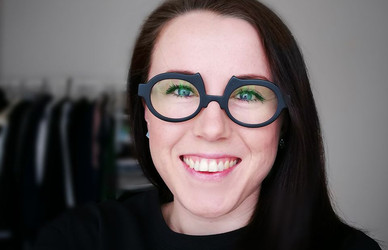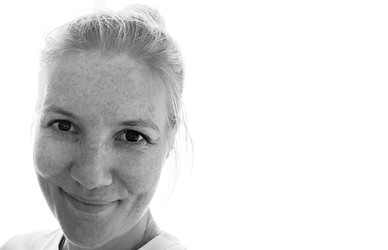A glimpse into the wardrobe
"It is the person who wears the clothes who knows best. The user possesses a vast amount of knowledge that designers can use actively in the design process.” These are the words of Louise Ravnløkke, a PhD student at Design School Kolding, where she works with the aesthetics and durability of textiles, in order to educate herself about the longevity of textiles.
What parameters can the textile designer engage to extend the life of knitwear? And what is it that makes certain pieces of clothing the favourites in your wardrobe? Louise Ravnløkke believes that the best way to get answers to these questions is to ask the users. So that is what she does in her ongoing PhD project about sustainability, fashion and textile design.
"For many years, the issue of sustainable fabrics has focused primarily on fibres, such as the use of organic cotton or the regeneration of polyester, in reducing chemicals in the production or improving the social conditions for the workers. Recently, attention has been directed towards consumers. In this project I have chosen to concentrate on the use of clothes and our relationship with our clothes. What type of clothes do we like most, and what is it that ends up in the bottom of the closet? These are important factors to be aware of when designing for an extended life for our clothes," says Louise Ravnløkke, who was the workshop manager at Design School Kolding’s knitwear department before she started her PhD project.
It has given her a deep insight into the high-tech options for a more sustainable production of knitwear – a knowledge that has helped to shape her PhD project focusing on industrially produced knitwear.
Tactile textiles
A total of eight women have so far been interviewed for the project. The first five lived in Finland and Louise interviewed them in connection with her research stay at the Aalto University in Helsinki.
"Another research group – Fashion / Textile Futures – is located there, and I visited their leading professor, Kirsi Niinimäki, to spar on theory and methods for user studies. At the same time I conducted five interviews, "says Louise Ravnløkke.
The last three interviews were added after she returned to Denmark, and they all followed the same pattern.
"The form of the interviews combines the 'Repertory Grid' method with a 'Wardrobe Study' in order to create a dialogue with the user," Louise Ravnløkke explains.
"Repertory Grid is a method originating from psychotherapy, aimed at creating a dialogue based on physical objects. A number of knitwear samples are presented, hidden in a bag, and thus a conversation begins about the tactile aspects. Based on my professional experience in design I put together two bags with three different qualities of knitwear in each, which the participants touch, and subsequently they express what emotions they elicit. Only afterwards do they look at the samples and discuss the visual experience of patterns and colours."
Only slightly worn
For every interview she brings a selection of sweaters, both new and worn, for a talk about the fit and the style and when something is too worn to wear.
"The second part of the interview is a Wardrobe Study, where we only look at knitwear. The participant sets up a hierarchy, where she divides the clothes into 'Favourites', 'Wear Occasionally' and 'Wear Rarely'. That initiates a conversation about what makes a garment valuable, or what causes it to be discarded. In this way, we articulate how we use our clothes," says Louise Ravnløkke, who further explains that the conversation also illustrates the affiliation value of the individual pieces:
"Some aspects are about fashion, others are more associated with memory – it may be a gift or something purchased on a vacation. Some of the pieces may not be active in the wardrobe any longer, but they still have value for the user – and what then are the related aesthetic parameters? "
Items on demand
Now the gathered knowledge will be systematised and translated into new insights for further use in the project.
"I will be involving the three Danish users more and more. All the information collected will be used to build a design concept that includes the users and allows them to make personal choices for the purchase of a sweater," says Louise Ravnløkke.
The three users are going to test the design concept by choosing a new sweater and include it as part of their wardrobe: "I intend to observe how the women use the sweater for a period of time in order to understand how their relationship with the sweater develops over time," says Louise Ravnløkke.
She mentions that there already are a number of small businesses that use the possibilities of modern technology to start alternative business concepts. One example is the knitwear company Unmade, which is included in the PhD project as a case study. And Louise Ravnløkke also mentions that the design school students are interested in the technological options to customise products in industrial contexts, and thus involve the users.
"The interesting thing is that, through the digital medium, the designer can engage the users and create unique products that meet their individual needs. But likewise the designer is challenged in new areas, as my project is going to help identify, "says Louise Ravnløkke.
In 2017, Design School Kolding and the international Cumulus Association will be hosting a large, international conference with the title REDO. The purpose of the conference is to zoom in on design’s role in creating a sustainable future and achieve impact on political decision-making processes. As a prelude to the conference, we will be bringing a series of articles to show Design School Kolding’s research and how we work to bridge the gap between design thinking and design practice.





